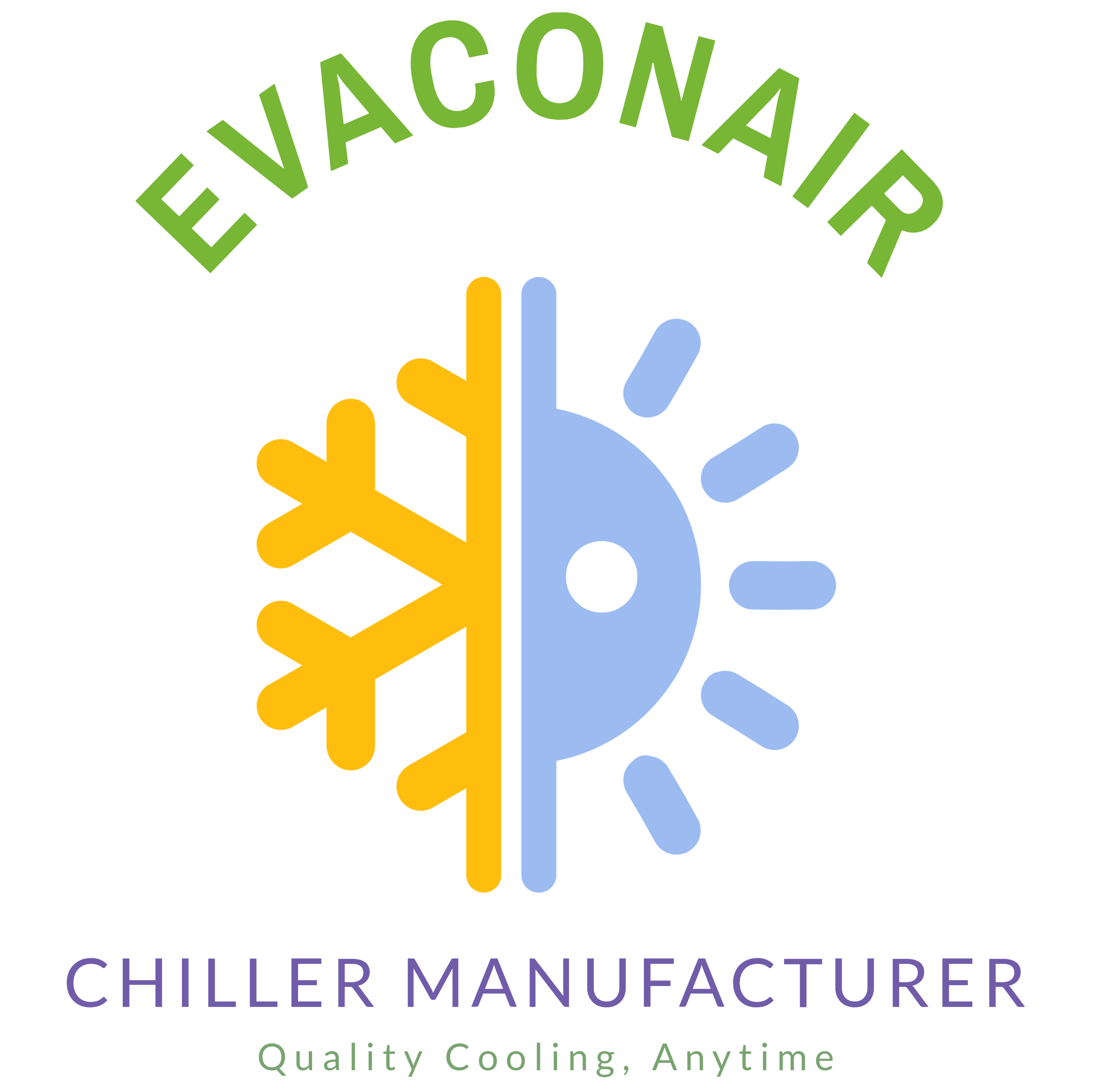Blog
How to Start a Chiller Plant?
Starting a chiller plant requires a systematic approach to ensure that all components function correctly and efficiently. Below is a step-by-step guide on how to start a chiller plant, ensuring optimal performance and safety.
1. Pre-Start-Up Checks
Before starting the chiller plant, it’s crucial to perform a series of pre-start-up checks:
- Inspect Equipment: Ensure that all equipment, including the Air-Cooled Water Chiller and Water-Cooled Screw Chiller, is in good condition. Check for any visible damage, leaks, or loose connections.
- Check Power Supply: Confirm that the chiller is connected to a stable power supply. Verify that the voltage and current ratings match the chiller’s requirements.
- Verify Fluid Levels: Ensure that the refrigerant, coolant, and oil levels are adequate in the system. Insufficient levels could cause damage to the chiller during operation.
- Inspect Auxiliary Equipment: Check all auxiliary equipment like the Mold Temperature Controller, Hot Air Dryer, and Vacuum Hopper Loader. Make sure they are set up correctly and ready for operation.
2. Start-Up Sequence
Once the pre-start-up checks are completed, follow this start-up sequence:
- Power On the Control Panel: Turn on the main control panel and verify that all system indicators are functioning correctly. Ensure that emergency stop buttons are operational.
- Start the Chiller: Depending on your chiller type (e.g., Air Cooled Screw Chiller or Water Cooled Water Chiller), press the start button on the chiller’s control panel. The chiller will begin its start-up process, which may include several internal checks.
- Monitor Initial Readings: Observe the initial temperature and pressure readings displayed on the control panel. These should fall within the manufacturer’s recommended range, as specified by Chiller Manufacturers In Ahmedabad.
- Check Flow Rates: Ensure that the flow rates of the chilled water and refrigerant are within the acceptable limits. This is essential for the efficient operation of the chiller.
3. System Stabilization
After the chiller has started, the system needs time to stabilize:
- Monitor Temperature Settings: Keep an eye on the temperature settings to ensure that they are stabilizing within the desired range. The Mold Temperature Controller should be adjusted accordingly to maintain consistent mold temperatures.
- Check for Abnormal Noises: Listen for any unusual noises coming from the chiller or auxiliary equipment like the Flake Cutter or Dehumidifier. Unusual sounds could indicate mechanical issues that need attention.
- Verify System Efficiency: Make sure that the chiller is operating efficiently by monitoring its performance metrics. This includes checking the power consumption and cooling output to ensure they align with expectations.
4. Routine Monitoring
Once the chiller plant is up and running, routine monitoring is essential:
- Regular Inspections: Schedule regular inspections of the chiller and auxiliary equipment. This includes checking components like the Volumetric Feeder and Gravimetric Blender for proper operation.
- Log Performance Data: Maintain logs of temperature, pressure, and flow rate data. Analyzing these logs can help identify any potential issues before they become significant problems.
- Service and Maintenance: Adhere to the maintenance schedule recommended by your Chiller Dealers In Ahmedabad. Regular servicing ensures that your chiller plant remains in peak condition.
Conclusion
Starting a chiller plant involves careful planning and execution to ensure the system operates smoothly and efficiently. Whether you’re working with an Air-Cooled Water Chiller or a Water-Cooled Screw Chiller In Ahmedabad, following these steps will help you achieve optimal performance. For more detailed information and to explore high-quality chiller options, visit our products page.
